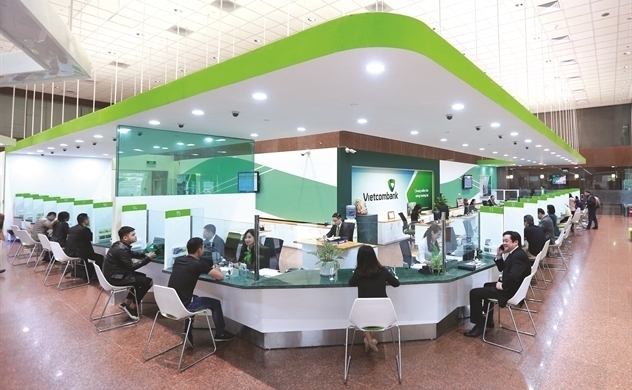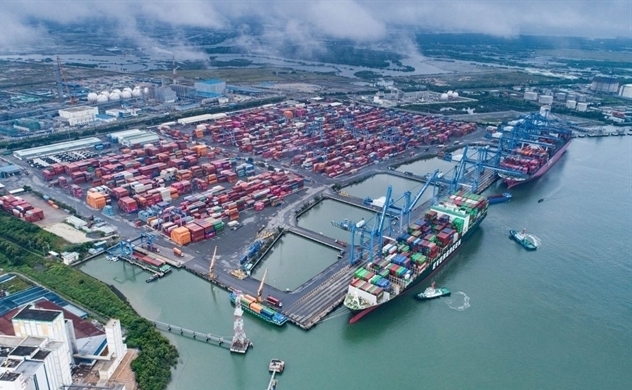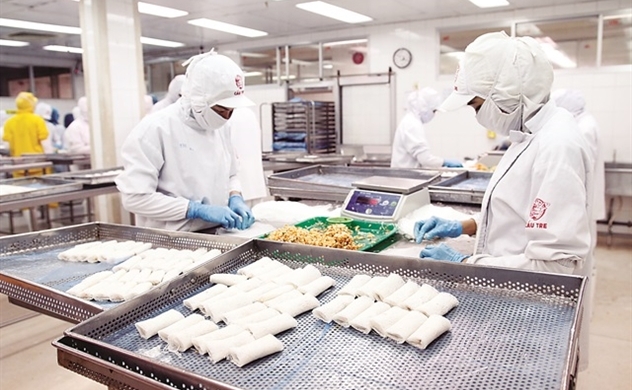Banking industry forecast to grow slower on economic slowdown

Photo: T.L
Following a period of rapid expansion, the banking sector's earnings obviously decreased in the first half of 2023 as a result of the significant effects of the race between deposit interest rates and falling loan demand. In particular, the listed banks' profits declined in light of the broader market challenges.
Diversified profits
In a recent report, the research departments of local securities firms simultaneously forecast that the entire banking industry's profit will grow by about 10% compared to 2022. Credit growth reached 10-12%.
According to the VCBS research, there will be differences in the profit outlooks of the various banking groups, with some small banks continuing to slow down and even seeing negative growth in the real estate market. The macroeconomic situation around the globe is deteriorating, which slows credit growth and makes it challenging to recover customers' debt-paying capacity.
Low credit growth
Data from the State Bank show that as of the end of July 2023, credit had expanded by 9% since the beginning of the year and by 4.56% since then. This is a modest gain compared to previous years when the majority of the production and commercial sectors experienced a reduction in credit growth contributions.
Over the past several years, the rise of all types of credit has been fueled by real estate-related credit, which makes up around 20% of total outstanding credit. Real estate credit growth was slower than overall credit growth as a result of the market shock.
For instance, real estate credit, which made up the majority (65% of outstanding loans) in the first half of the year and is driven by demand for house loans, fell by 1.12%. In the previous three years, a decreasing tendency has just recently begun to manifest.
However, lending interest rates for house loans have returned to advantageous levels, and it is anticipated that projects scheduled to go on sale at the end of this year will continue to be the primary factor boosting homeowner credit demand. growth and personal development in 2023 and 2024's second half.
Dr. Can Van Luc, a member of the National Financial and Monetary Policy Advisory Council, asserts that since the year's beginning, policies have been released to support the trend of falling interest rates, which has resulted in faster capital mobilization and credit growth. For the entire year 2023, loan growth is anticipated to be between 14 and 15%.
Bad debt increases
For the third consecutive quarter, bad debt climbed, rising to 2.1% in the second quarter from 1.6% at the end of 2022. Summary of information from 27 commercial banks' second quarter financial statements for The entire amount of bad debt (groups 3-5) is estimated to be VND187,475 billion, up 10% from the previous quarter and 37.4% from the end of 2022.
When compared to the end of 2022, the ratio of group 2 debt throughout the whole banking sector climbed by up to 45% at the end of the first quarter of 2023. In the following quarter, the trend continued to rise, albeit at a slower rate.
During this time, the industry's bad debt coverage ratio (LLR), which was 143% a year ago, is now only 99.4%. There are now just two banks, Bac A Bank (0.7%) and Vietcombank (0.8%), that maintain a bad debt level below 1%. In addition to VietinBank (1.3%), MB (1.4%), and BIDV (1.6%), the few banks with bad debt percentages below 1% include ACB and Techcombank.
When the bad debt ratio increases on a large scale, it will lead to interbank system risks and, more seriously, can cause a financial crisis. Mr. Nguyen Quoc Hung, General Secretary of the Vietnam Banks Association (VNBA), said that the bad debt situation of credit institutions is currently "very worrying" when many businesses are still unable to repay their debts. Debts have been restructured and are due, affecting credit quality.
Year-end motivation
According to MBS Chief Economist Hoang Cong Tuan, the initiatives to cut operational interest rates open the door for decreasing lending interest rates to lower levels, which would increase credit demand. Additionally, the State Bank's aforementioned move assists banks in potentially increasing their net profit margins in the second half of the year.
Generally speaking, the banking sector may differ in 2023, when banks with backup buffers and solid asset quality will have a larger edge over the current year's economic challenges. The choice to give some commercial banks more breathing room has also significantly boosted banks' financial performance.
The largest potential for the banking sector in the second half of this year, according to Ms. Pham Lien Ha, Director of Financial Services Industry Research at HSC, is interest rates. Lower deposit interest rates will reduce bank capital expenses. In addition, the ongoing trend of interest rate reductions will support credit expansion and economic growth in both the second half of 2023 and 2024.
As Vietnam progressively enters the recovery era, analysts from VNDirect Securities Company predict that banks with a large share of retail loans, including VIB and ACB, will have numerous opportunities to boost credit growth. starting out. On the other hand, when Circular 06/2023 (which will be in force starting in September 2023) restricts access to capital for enterprises, banks with a large share of real estate loans may find it challenging to increase credit.
The last quarter of 2023 will see credit growth rates and NIM rates higher than the industry average for banks with a significant number of retail customers and a focus on this market.
Same category news
-
Huyen Hoang
-
Arthur Do và Nick Wood
Latest news
-
Huyen Hoang

 TIẾNG VIỆT
TIẾNG VIỆT 






_291615658.jpg)









